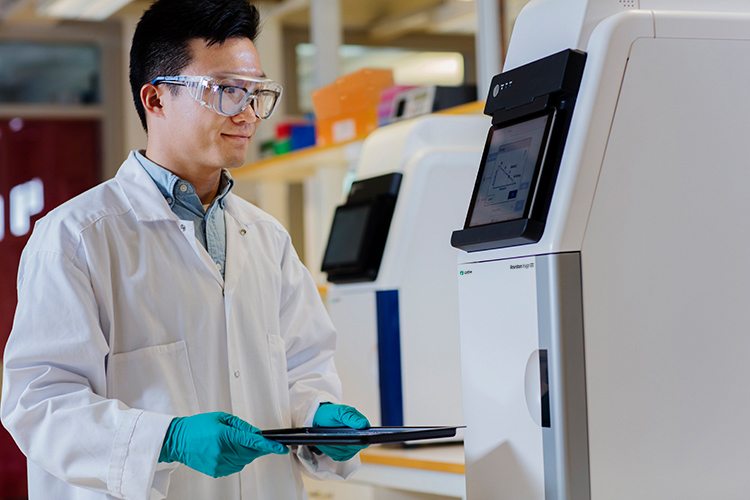What is medical imaging?
Medical imaging and molecular imaging refers to various digital health technologies that allow us to view organs, tissues and other anatomy. It is the advanced technique for producing a visual representation of the body for diagnosis, treatment and monitoring of medical conditionals, among other clinical analysis.
When was medical imaging invented?
Medical imaging and advanced molecular imaging systems were born from some of the most outstanding advances in genomics, proteomics, protein research, and drug discovery during the 20th century, which is when imaging became best known as a wealth of information for what was revealed during the imaging process.
The History of Advanced Medical Imaging
Since the advent of western blot electrophoresis in the mid-1970s, there has been a rapid evolution of the tools and the methods used to produce and interpret these medical imaging systems.
Medical imaging capture has a long and varied history that spans many scientific disciplines. From Sir Isaac Newton’s discovery that light was composed of different colors, it took over 150 years before the first image was captured by Joseph Niepce in 1825. The invention of film by George Eastman in the early 20th century led to its widespread use. His invention of film rolls, as well as Kodak™ cameras, set the standard for image capture until the mid-1960s and the advent of Polaroid™ instant color photography. The development of the charge coupled device (CCD) chip in 1969 by Willard S. Boyle and George E. Smith heralded the beginning of a technological line of development that eventually led to the replacement of film by digital imaging systems. However, older photochemical methods continue to serve users in specialist applications.
The History of Molecular Imaging
Historically, colorimetric stains such as Coomassie Blue and silver stain held positions as the ‘gold-standard’ techniques in protein medical imaging. Coomassie Blue stain has its origins in an acid wool dye developed in the late 19th century, and is named after the town of Kumasi, in Ghana. Coomassie Brilliant Blue was first used to visualize proteins in 1963 by Fazekas de St. Groth and colleagues, while silver staining was first used in the 14th century to color glass. The first biological applications, however, emerged early in the 20th century when Camillo Golgi used silver staining to study the nervous system. In 1973, silver staining was introduced by Kerenyi and Gallyas as a sensitive procedure to detect trace amounts of proteins in gels.
The last decade has seen a shift from colorimetric stains to the use of fluorescent labels and stains. However, colorimetric staining is still widely used to verify and evaluate the efficiency of transfer of proteins from gels to membranes. Generally, colorimetric staining methods have a narrower dynamic range and more variability in the specificity with which the stain binds to different proteins. The use of fluorescent stains and labels, in combination with advanced imaging devices, allows for a much broader dynamic range and more sensitive detection when compared to traditional colorimetric staining methods. Fluorescent stains and labels such as Deep Purple Total Protein Stain and CyDye™ Fluors have become essential tools for the analysis of proteins. The potential of fluorescent technologies in multiplexing applications (the simultaneous use of two or more labels directed against different targets in the same sample) makes it the technology of choice in several situations. Fluorescent labeling of specific proteins has allowed scientists to localize subcellular structures or to identify multiple protein targets on a single blot, even if they have identical molecular weights. Green fluorescent protein (GFP), first isolated from the jellyfish Aequorea victoria, emits bright green light when exposed to blue light. Importantly, GFP is not toxic when illuminated in living cells and has become an important tool for in vivo analysis. Through cloning and genetic modification, a wide variety of GFP derivatives are in use today. It is widely used as a reporter for gene expression of fusion proteins and in the study of gene regulation in living organisms.
In 1975, the British biologist, Edwin Southern, pioneered the use of isotope-labeled nucleotides for detection of specific DNA sequences. This technique to transfer DNA fragments from an agarose gel to a membrane, known as Southern blotting, opened the way for other blotting techniques based on electrophoresis, such as Northern blotting for RNA in 1977 and Western blotting (also known as immunoblotting) for the transfer of proteins.
The name “Western blot” was given to the technique by W. Neal Burnette in 1981, although the method was introduced in 1979 by Harry Towbin and colleagues. To this day, Western blotting remains one of the most powerful methods for the separation and quantitation of proteins, although radioisotopes have lost their position as the principle technology for labeling and detection to safer, cheaper, and more effective antibody labeling and light-emitting technologies.
Depending on experimental needs many options are available for luminescent labeling and detection of biomolecules. Chemiluminescent or enhanced chemiluminescent (ECL) systems now deliver high sensitivity for solution or blot-based assays. Amersham™ ECL™ was the world’s first commercially available non-radioactive method for detecting proteins, and nucleic acids enabling detection of minute quantities of a specific protein, based on a signal proportional to the amount of protein present over a wide range of concentrations.
Bioluminescence is an aspect of chemiluminescence in which living organisms, such as fireflies, create their own light when an enzyme acts on a chemical substrate. This application has grown considerably over the past decade as the traditional use of reporter genes has enabled the production of proteins with a bioluminescent tag. While a chemiluminescent system must be assayed in vitro, bioluminescent systems allow biological mechanisms to be visualized and assayed in vivo.
For more information around the application and types of advanced molecular imaging and detection systems, click here.
